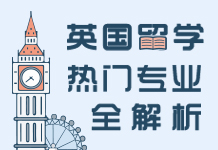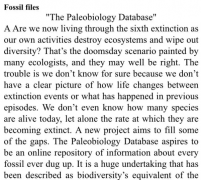2017年2月11日青岛朗阁雅思阅读考试真题回顾及解析
来源:青岛朗阁
浏览:
发布日期:2017-02-13 11:00
摘要:2017年2月11日的雅思阅读考试已经结束了,考生们觉得难不难呢?小编这就为大家送上青岛朗阁老师辛苦整理的2017年2月11日雅思阅读考试真题回顾及解析,雅思考生们跟着小编一起来看看吧~
青岛朗阁雅思阅读老师 许鑫淼
| Reading Passage 1 | |
| Title: | The innovation of grocery stores |
| Question types: |
配对; 5 填空; 5 选择; 3 |
| 文章内容回顾 |
文章介绍了shopping形式的发展,从最开始人们多前台给售货员list让去找东西,到后来新的形式的自主shopping,发展到连锁商店。 第一段:以前没有超市买东西很不方便 第二段:有需求所以需要创新 第三段:有人发明了现代grocery store,然后主要讲他的设计,有一个checkout area,一个自主选购区域,一个stock room,还有一个gallery用于监控 第四段:进一步开发了self service market,主要的目的是挣钱,但是影响了以后的整个行业 第五段:self service market 最初有点小问题-checkout area 太挤了,后来改进了,还有个创新就是他把本来损毁的商品放在特定区域低价卖出 最后两段:他成立了一个连锁品牌,pw,他到今天还被人记得也是因为这个品牌。 |
|
相关英文原文阅读 |
A At the beginning of the 20th century, grocery stores in the United States were full-service. A customer would ask a clerk behind the counter for specific items and the clerk would package the items, which were limited to dry goods. If they want to save some time, they have to ask a delivery boy or by themselves to send the note of what they want to buy the grocery story first and then go to pay the goods later. These grocery stores usually carried only one brand of each good. There were early chain stores, such as the A&P Stores, but these were all entirely full-service and very time-consuming. B In 1885, a Virginia boy named Clarence Saunders began working part-time as a clerk in a grocery store when he was 14 years old, and quit school when the shopkeeper offered him Ml time work with room and board. Later he worked in an Alabama coke plant and in a Tennessee sawmill before he returned to the grocery business. By 1900, when he was nineteen years old, he was earning $30 a month as a salesman for a wholesale grocer. During his years working in the grocery stores, he found that it was very inconvenient and inefficient for people to buy things because more than a century ago, long before there were computers, shopping was done quite differently than it is today. Entering a store, the customer would approach the counter (or wait for a clerk to become available) and place an order, either verbally or, as was often the case for boys running errands, in the form of a note or list. While the customer waited, the clerk would move behind the counter and throughout the store, select the items on the list—some form shelves so high that long-handled grasping device had to be used—and bring them back to the counter to be tallied and bagged or boxed. The process might be expedited by the customer calling or sending in the order beforehand, or by the order being handled by a delivery boy on a bike, but otherwise it did not vary greatly. Saunders, a flamboyant and innovative man, noticed that this method resulted in wasted time and expense, so he came up with an unheard-of solution that would revolutionize the entire grocery industry: he developed a way for shoppers to serve themselves. C So in 1902 he moved to Memphis where he developed his concept to form a grocery wholesale cooperative and a full-service grocery store. For his new “cafeteria grocery”, Saunders divided his grocery into three distinct areas: 1) A front “lobby” forming an entrance and exit and checkouts at the front. 2) A sales department, which was specially designed to allow customers to roam the aisles and select their own groceries. Removing unnecessary clerks, creating elaborate aisle displays, and rearranging the store to force customers to view all of the merchandise and over the shelving and cabinets units of sales department were “galleries” where supervisors were allowed to keep an eye on the customers while not disturbing them. 3) And another section of his store is the room only allowed for the clerks which was called the “stockroom” or “storage room” where large refrigerators were situated to keep fresh products from being perishable. The new format allowed multiple customers to shop at the same time, and led to the previously unknown phenomenon of impulse shopping. Though this format of grocery market was drastically different from its competitors, the style became the standard for the modern grocery store and later supermarket. D On September 6, 1916, Saunders launched the self-service revolution in the USA by opening the first self-service Piggly Wiggly store, at 79 Jefferson Street in Memphis, Tennessee, with its characteristic turnstile at the entrance. Customers paid cash and selected their own goods from the shelves. It was unlike any other grocery store of that time. Inside a Piggly Wiggly, shoppers were not at the mercy of shop clerks. They were free to roam the store, check out the merchandise and get what they needed with their own two hands and feet. Prices on items at Piggly Wiggly were clearly marked. No one pressured customers to buy milk or pickles. And the biggest benefit at the Piggly Wiggly was that shoppers saved money. Self-service was a positive all around. “It’s good for both the consumer and retailer because it cuts costs,” noted George T. Haley, a professor at the University of New Haven and director of the Center for International Industry Competitiveness. “If you looked at the way grocery stores were run previous to Piggly Wiggly and Alpha Beta, what you find is that there was a tremendous amount of labor involved, and labor is a major expense.” Piggly Wiggly cut the fat. E Piggly Wiggly and the self-service concept took off. Saunders opened nine stores in the Memphis area within the first year of business. Consumers embraced the efficiency, the simplicity and most of all the lower food prices. Saunders soon patented his self-service concept, and began franchising Piggly Wiggly stores. Thanks to the benefits of self-service and franchising, Piggly Wiggly ballooned to nearly 1,300 stores by 1923. Piggly Wiggly sold $100 million—worth $1.3 billion today—in groceries, making it the third-biggest grocery retailer in the nation. The company’s stock was even listed on the New York Stock Exchange, doubling from late 1922 to March 1923. Saunders had his hands all over Piggly Wiggly. He was instrumental in the design and layout of his stores. He even invented the turnstile. F However Saunders was forced into bankruptcy in 1923 after a dramatic spat with the New York Stock Exchange and he went on to create the “Clarence Saunders sole-owner-of-my-name” chain, which went into bankruptcy. G Until the time of his death in October 1953, Saunders was developing plans for another automatic store system called the Food electric. But the store, which was to be located two blocks from the first Piggly Wiggly store, never opened. But his name was well-remembered along with the name Piggly Wiggly. 段落信息配(NB You may use any letter more than once.) 答案:1.D 2.A 3.F 4.C 5.E 填空题(ONLY ONE WORD AND/OR A NUMBER) 答案:6.clerk 7.customers/shoppers 8. lobby 9.stock room 10.galleries 选择题: 答案:11. C 12. B 13.C |
| 题型难度分析 | 第一篇的题型包括两个常规顺序题型:填空题和选择题,题型难度不大,文章定位也比较容易。另外一个是乱序的段落信息配,但由于本篇文章结构和内容比较清晰,所以总体来说,难度并不大。 |
| 题型技巧分析 | 这篇文章虽然出现了断子绝孙题,但其实难度并不大,考生可以根据平行阅读法尽量读一次文章将三道题型一起做出;对于不擅长做段落信息的考生来讲,可以采取第二种方法,即先做两个细节顺序题型填空题和选择题,最后有时间再做段落信息配对,此时做完前两道题型后会对全文有一个大概的了解,会对做配对题有很大的帮助。 |
| 剑桥雅思推荐原文练习 |
剑5 Test 1 Passage 2 剑6 Test 1 Passage 2 |
| Reading Passage 2 | |
| Title: | Iceberg as a water source |
| Question types: |
T/F/NG; 7 Summary; 5 选择; 1 |
| 文章内容回顾 |
本文主要讲解iceberg作为一个水资源如何被利用,从有限的利用到具体如何操作用plastic装iceberg运输,节省资金,最后展望。 第一段:冰川开发有限;第二段:但是冰川含水量大,可以开发,但是价格贵;第三段:德国一个IA机构想了个办法去开发,就是wrap the iceberg,它有几个好处;第四段:好处,方便运输,不会融化,运到目的地以后就可以利用杨柳运输;最后两段讲iceberg开发不是梦,但是只用于最需要的地方,比如经历干旱的地方。 答案:(仅供参考) 1. TRUE 2. FALSE 3. FALSE 4. FASLE 5. TRUE 6. NOT GIVEN 7. FALSE 8 -12待补充 13.C 要把iceberg 用在有genuine need 的地方 |
| 题型难度分析 | 这篇文章的难度也不大,判断题和填空题都属于细节性考察的题型,而且具有顺序原则,属于简单的题型;最后一个题型为选主旨的单选题,本篇文章本身难度不大,所以选择起来比较简单。 |
| 剑桥雅思推荐原文练习 |
剑5Test 1 Passage 3 剑10Test 3 Passage 3 |
| Reading Passage 3 | |
| Title: | Human cooperation |
| Question types: |
配对; 5 选择; 5 判断; 4 |
| 文章内容回顾 | 文章主要讲解了不同形式的合作如何产生。人类无时无刻不需要合作,对于快速激烈的行动,比如跳舞,verbal communication就没有用了,如果双方能看到对反个,合作的效率更高。有时候尽管会make the process harder,但还是会合作。举例子是一个实验,让实验对象看不同颜色分别击打左右边的东西。一个人的判断会受到影响,如果the process is shared. |
| 题型难度分析 | 本篇文章为新题,文章和题目回忆不详,但据考生反应,第三篇在三篇之中难度最高,配对题比较难,此外,大部分考生反应,由于前两篇占用了很长时间,导致第三篇没有时间做,所以建议考生要注意把握时间的问题。 |
| 剑桥雅思推荐原文练习 |
剑5 Test 3 Passage 3 剑6 Test 3 Passage 1 |
|
考试趋势分析和备考指导: 新年第一场考试的文章仍是两旧一新,整体难度适中偏难。依然延续16年配对题为主流题型的风格,出现了段落信息配这个比较难的题型,和判断题和填空题依然是三大主流题型。此外,本次的判断题考察的比例有所上升。 文章体裁涉及行为研究类,自然科学类,发展史类,比较多样,考生可以从推荐的剑桥类似文章中积累相关词汇。 雅思的考试趋势越来越注重考察考生真实的语言能力,所以单词和语法基础要打牢,再加上对题型方法和特点的把握,才能更好的面对雅思考试。 |
|

扫二维码,添加朗阁咨询老师,备注“官网”
免费领取雅思、托福备考计划、精选资料,最新口语新题考点资料
25
2022-06
-
2020年1月16日雅思听力考试真题
2020年1月16日雅思考试已经结束,正在备考雅思的小伙伴,你们想要知道这次考试的听力部分都...
25
2022-06
-
2020年1月16日雅思阅读考试真题
正在进行雅思备考的小伙伴,你们想知道2020年1月16日雅思考试的考试内容吗?今天为了帮助大家...
25
2022-06
-
2020年1月16日雅思写作考试真题
今天为了帮助正在进行雅思备考的小伙伴更好的准备雅思考试,青岛朗阁雅思写作名师 费晓静...
25
2022-06
-
2020年1月16日雅思口语考试真题
今天青岛朗阁雅思口语名师张开翼为大家整理了2020年1月16日雅思口语考题总结,分析了雅思口...
04
2020-12
-
2020年11月14日朗阁雅思听力考题回顾
今天,要和大家分享的是2020年11月14日朗阁雅思听力考题回顾,希望这篇文章能够对大家的学习...
04
2020-12
-
2020年11月14日朗阁雅思阅读考题回顾
今天,要和大家分享的是2020年11月14日朗阁雅思阅读考题回顾,希望这篇文章能够对大家的学习...
热门课程
大家都在看
阅读(2095)
阅读(1965)
阅读(1942)
阅读(1323)
阅读(1093)
阅读(831)







